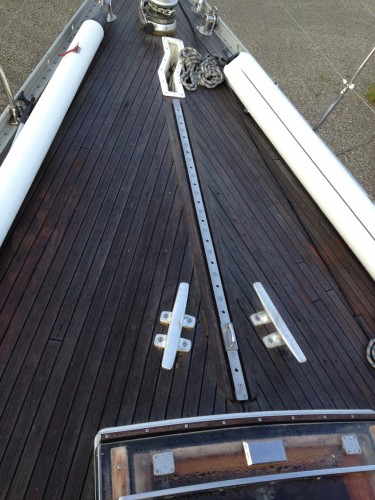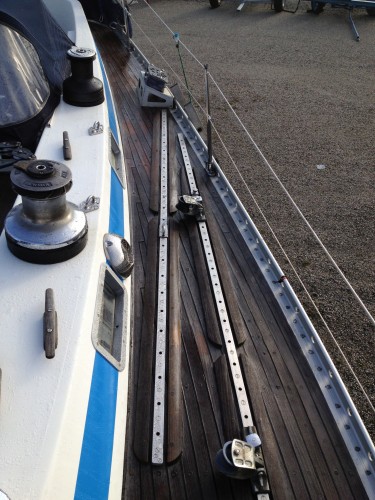Do you want to be informed on new Posts on this Thread? (members only)
| Sail & Rigging - In Boom Furling Gear?! |
|---|
|
Join Date: 16 February 2007
Posts: 199 |
||
|---|---|---|
|
In Boom Furling Gear?! |
|
Join Date: 31 January 2007
Posts: 23 |
||
|---|---|---|
|
Dear Philippe
|
|
Join Date: 06 August 2010
Posts: 24 |
||
|---|---|---|
|
Hi Philippe,
|
|
Join Date: 05 August 2010
Posts: 162 |
||
|---|---|---|
|
Even though I do not have any bad experience with in-boom or in-mast reefing systems, I do not fully trust a system where I cannot see or easily reach the central components. Plus, I have witnessed quite a number of problems with the in-systems on other boats, usually of the same nature: the system jammed in a moment where the crew definitely wanted the sail to be taken in.
|
|
Join Date: 16 February 2007
Posts: 199 |
||
|---|---|---|
|
Dear Jan ; brian and Martin,
|
|
Join Date: 02 January 2008
Posts: 1547 |
||
|---|---|---|
|
Dear Philippe |
|
Join Date: 16 February 2007
Posts: 199 |
||
|---|---|---|
|
Dear Lars,
|
|
Join Date: 02 January 2008
Posts: 1547 |
||
|---|---|---|
|
Dear Philippe |
|
Join Date: 16 February 2007
Posts: 199 |
||
|---|---|---|
|
Dear Lars, Dear All,
  |
|
Join Date: 30 January 2007
Posts: 461 |
||
|---|---|---|
|
This is an interesting thread and I follow it closely. |
|
Join Date: 30 January 2007
Posts: 461 |
||
|---|---|---|
|
I apologize for my mixing up the words "leech" and "luff", but luckily enough I found a good description with graphics of the "lacing line method" here: |
|
Join Date: 05 August 2010
Posts: 162 |
||
|---|---|---|
|
Hi Daniel and Philippe,
|
|
Join Date: 02 January 2008
Posts: 1547 |
||
|---|---|---|
|
Daniel |
|
Join Date: 05 August 2010
Posts: 162 |
||
|---|---|---|
|
oops -- maybe I used the wrong terminology. There certainly is nothing hydraulic involved.
|
|
Join Date: 16 February 2007
Posts: 199 |
||
|---|---|---|
|
Dear Daniel, Martin and Lars,
|
|
Join Date: 30 January 2007
Posts: 461 |
||
|---|---|---|
|
Interesting indeed! |
|
Join Date: 05 August 2010
Posts: 162 |
||
|---|---|---|
|
Hi all,
|
|
Join Date: 28 July 2008
Posts: 79 |
||
|---|---|---|
|
Interesting thread; I'm learning a fair bit! If you are ordering a new boom, have you considerd all the "options" you may want with it? E.g. Cockpit light ( a bit tartie I know but I'd love a couple for late night drinking/reading) eyes for preventers, end fitting for using as a davit (eg lifting outboards etc) . I'm sure there are a host of other considerations? I only mention as everytime we order something, I seem to miss something I would like to have had if I'd known! I'd be interested to know the configuration for powering your electric winches. Whilst we sail as a family most of the time, when it comes to "grinding" its generally me! Cheers Adrian |
|
Join Date: 30 January 2007
Posts: 461 |
||
|---|---|---|
|
Martin, |
|
Join Date: 05 August 2010
Posts: 162 |
||
|---|---|---|
|
Daniel,
|
|
Join Date: 16 February 2007
Posts: 199 |
||
|---|---|---|
|
Dear Friends,
|
- Threads : 1702
- Posts : 10217
- Members: 820
- Online Members: 0

